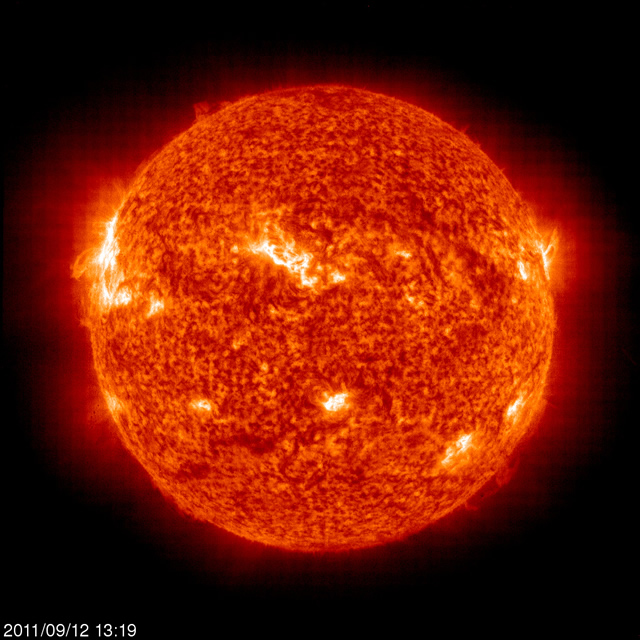 Some wacky ideas about our sun from not so long ago help us realize the importance of a healthy dose of skepticism combined with good science. In fact, as you’ll see from the timestamp on the image from NASA’s Solar and Heliospheric Observatory (SOHO) science can now bring us – the public – near realtime images of our nearest star.
Some wacky ideas about our sun from not so long ago help us realize the importance of a healthy dose of skepticism combined with good science. In fact, as you’ll see from the timestamp on the image from NASA’s Solar and Heliospheric Observatory (SOHO) science can now bring us – the public – near realtime images of our nearest star.
[div class=attrib]From Slate:[end-div]
The sun is hell.
The18th-century English clergyman Tobias Swinden argued that hell couldn’t lie below Earth’s surface: The fires would soon go out, he reasoned, due to lack of air. Not to mention that the Earth’s interior would be too small to accommodate all the damned, especially after making allowances for future generations of the damned-to-be. Instead, wrote Swinden, it’s obvious that hell stares us in the face every day: It’s the sun.
The sun is made of ice.
In 1798, Charles Palmer—who was not an astronomer, but an accountant—argued that the sun can’t be a source of heat, since Genesis says that light already existed before the day that God created the sun. Therefore, he reasoned, the sun must merely focus light upon Earth—light that exists elsewhere in the universe. Isn’t the sun even shaped like a giant lens? The only natural, transparent substance that it could be made of, Palmer figured, is ice. Palmer’s theory was published in a widely read treatise that, its title crowed, “overturn[ed] all the received systems of the universe hitherto extant, proving the celebrated and indefatigable Sir Isaac Newton, in his theory of the solar system, to be as far distant from the truth, as any of the heathen authors of Greece or Rome.”
Earth is a sunspot.
Sunspots are magnetic regions on the sun’s surface. But in 1775, mathematician and theologian J. Wiedeberg said that the sun’s spots are created by the clumping together of countless solid “heat particles,” which he speculated were constantly being emitted by the sun. Sometimes, he theorized, these heat particles stick together even at vast distances from the sun—and this is how planets form. In other words, he believed that Earth is a sunspot.
The sun’s surface is liquid.
Throughout the 18th and 19th centuries, textbooks and astronomers were torn between two competing ideas about the sun’s nature. Some believed that its dazzling brightness was caused by luminous clouds and that small holes in the clouds, which revealed the cool, dark solar surface below, were the sunspots. But the majority view was that the sun’s body was a hot, glowing liquid, and that the sunspots were solar mountains sticking up through this lava-like substance.
The sun is inhabited.
No less a distinguished astronomer than William Herschel, who discovered the planet Uranus in 1781, often stated that the sun has a cool, solid surface on which human-like creatures live and play. According to him, these solar citizens are shielded from the heat given off by the sun’s “dazzling outer clouds” by an inner protective cloud layer—like a layer of haz-mat material—that perfectly blocks the solar emissions and allows for pleasant grassy solar meadows and idyllic lakes.
